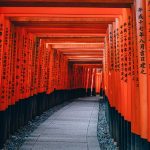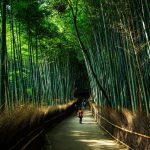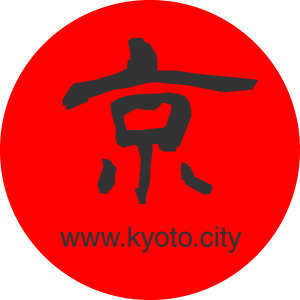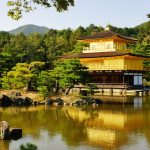-

-
Fushimi Inari Taisha (main Inari shrine)
2020/7/25
The main shrine of Inari Shrines, which has about 30,000 companies all over Japan. It is famous as a guardian deity of business prosperity, good harvest, and good luck, and many pilgrims visit during the New Year. Behind the main shrine, there is a vermilion torii tunnel called "Senbon Torii", which is one of the popular spots of the main shrine.
-

-
Arashiyama bamboo grove
2020/7/26
Arashiyama, a popular sightseeing spot in Kyoto, has a fantastic small path overgrown with thousands of bamboos. It is one of the representative scenery of Kyoto with a walking path of about 400 meters from Nomiya Shrine on the north side of Tenryuji Temple to Okochi Sanso Garden. Especially during the early winter event "Arashiyama Hana toro", bamboo forests and Togetsukyo bridges are illuminated by countless LED bulbs, and the small paths that are brilliantly illuminated are truly spectacular.
-

-
Nijo Castle
2020/7/15
Nijo Castle was completed in 1603 when Tokugawa Ieyasu ordered the construction of the castle. After that, expansion work was carried out by Iemitsu, and it expanded to the current scale. It is a castle where you can get a glimpse of architecture, paintings and other styles from the Keicho era to the Kanei era.
-

-
Kinkakuji (Golden Pavilion)
2020/7/26
Rokuon-ji Temple is a temple of the Rinzai Sōkokuji School in Kita-ku, Kyoto. The Syariden, a three-story building with gold leaf inside and outside the building, is known as the Kinkaku, and the entire temple including the Syariden is known as the Kinkakuji. It is a sub-temples outside the Sogokuji Temple. The name of the temple is based on the Rokuonin, the posthumous Buddhist name of Yoshimitsu Ashikaga, the third shogun of the Muromachi shogunate. Sango - the mountain number is Kitayama. Jimon - the temple crest is Goshichinokiri. The Kitayama Sanso of Yoshimitsu was made a temple after ...